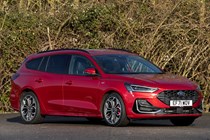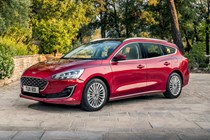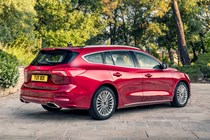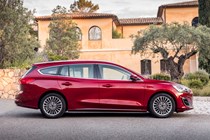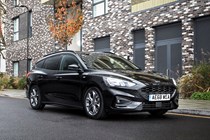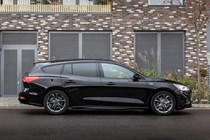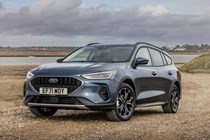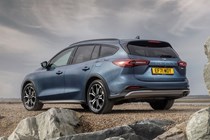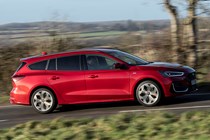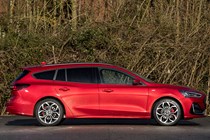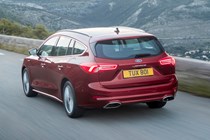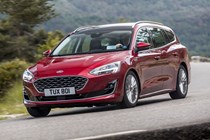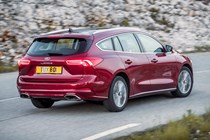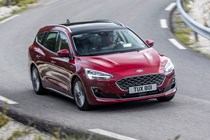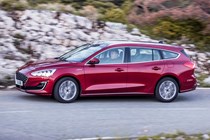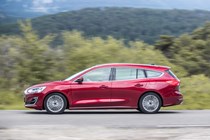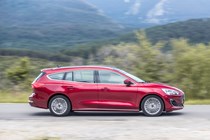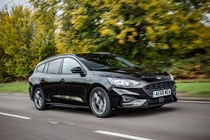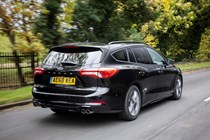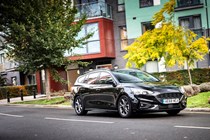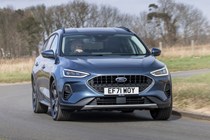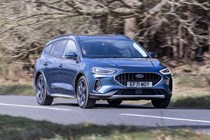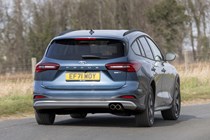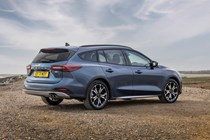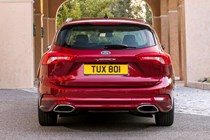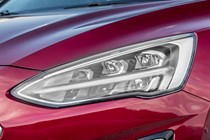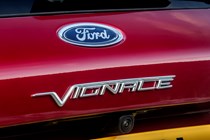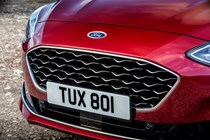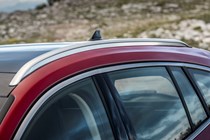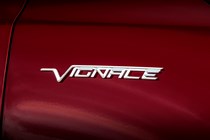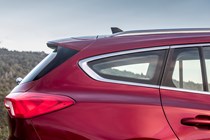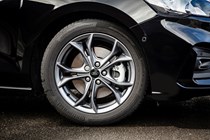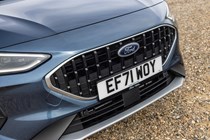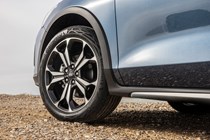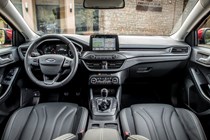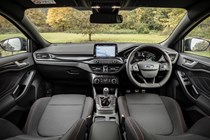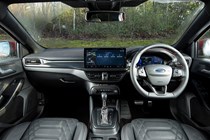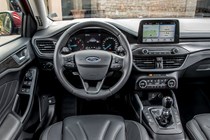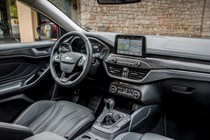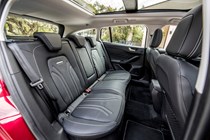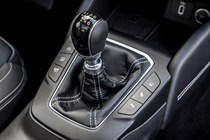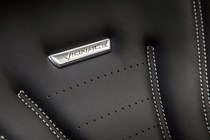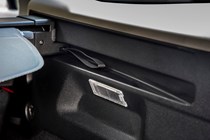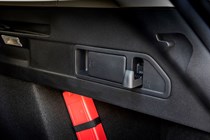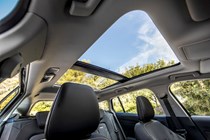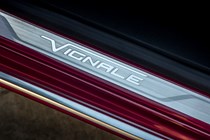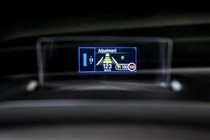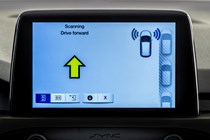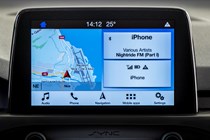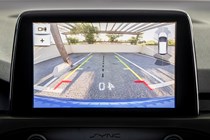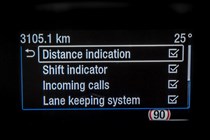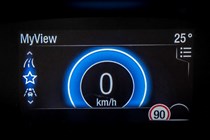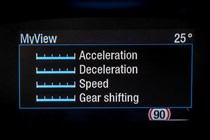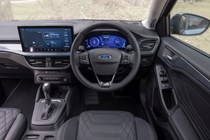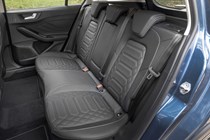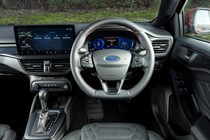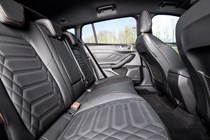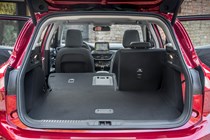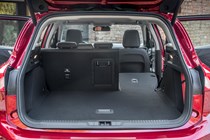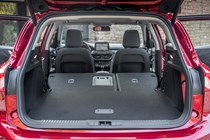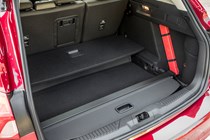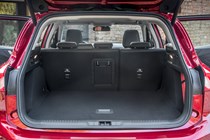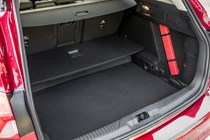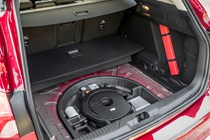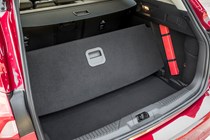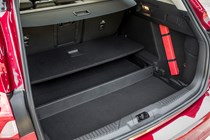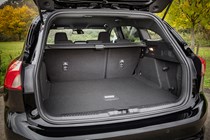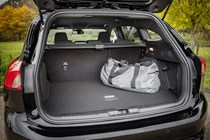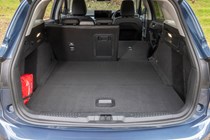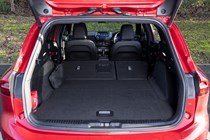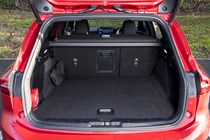Ford Focus Estate engines, drive and performance
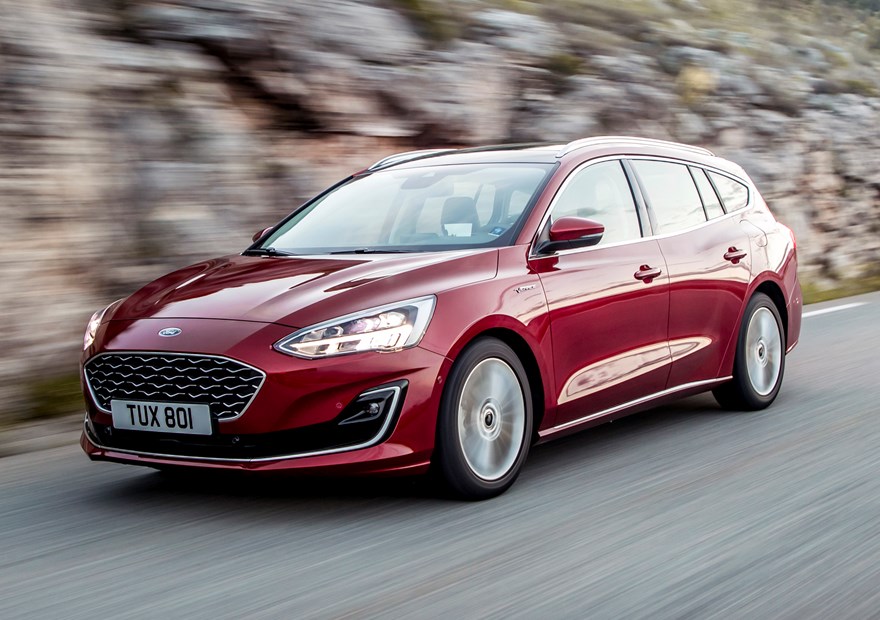
- Five engines – including a hot 280hp ST model
- No plug-in hybrid or electric option available
- Sharp-shifting six-speed manual gearbox
Ford used to offer the Focus Estate with a broader range of engines, including a 1.5-litre three-cylinder petrol and a 2.0-litre four-cylinder diesel. However, for the facelift, the brand has trimmed the number of engines down to just five. Thankfully, they’re all pretty good.
Petrol engines
The cheapest petrol engine available is a non-electrically assisted 1.0-litre three-cylinder unit, which produces 125hp and 170Nm of torque. Performance isn’t exactly sensational, but the turbocharger makes the engine feel far brawnier than its displacement would suggest.
Above that, there’s a mild hybrid version of the same unit. It features a small electric motor which helps the engine to spin when accelerating, improving fuel economy slightly. Step up again, and you’ll find a 155hp variant of this electrically assisted engine, which offers faster acceleration and (strangely) better fuel economy.
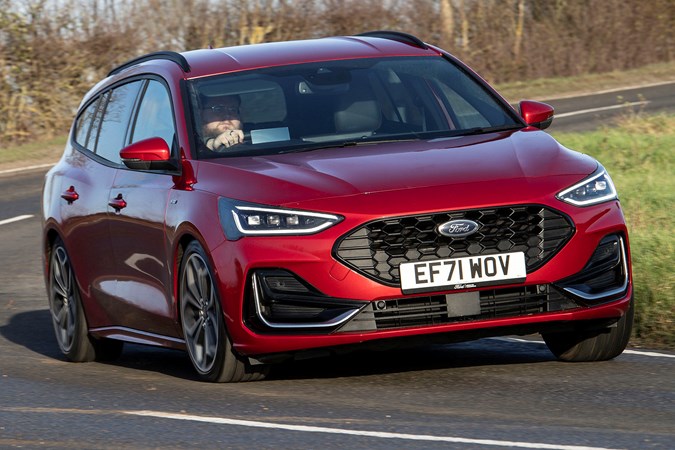
All three petrol engines are best when paired with Ford’s six-speed manual gearbox. It has a slick shift and it suits the car’s fun chassis well. You’ll have to work the transmission often to keep the engines on-boost, though – they’re only small and need to spin quickly to get enough gas flowing through the turbo. Drop off the boost and they feel very flat indeed.
If you’re hankering for more performance, you can also have the Focus Estate in Ford’s hot ST specification. This model’s powered by a turbocharged 2.3-litre four-cylinder petrol engine with 280hp and 420Nm of torque, which is enough to push the car from 0–62mph in just 5.8 seconds. For comparison, that’s half a second quicker than the Volkswagen Golf GTI hatchback.
Diesel engines
You can’t order a diesel Focus from the factory anymore, but there are plenty of nearly new examples kicking around on the classifieds. If you want a facelifted car, you only have one choice. It’s a 1.5-litre four-cylinder unit with 120hp and 300Nm of torque. It’s more gruff than the petrol engines, but it makes for a relaxing cruiser if you let the engine’s low-down grunt do most of the work for you.
Just before Ford facelifted the Focus, you could have it with a 2.0-litre diesel engine. That was removed for the update – so if you want that engine, you’ll have to shop used. The engine is responsive at low revs, but the torque curve flattens off when pushed hard.
What’s it like to drive?
- Excellent handling – especially in ST-Line trim
- Standard cars have impressive ride quality
- All are a doddle to drive around town
The Ford Focus hatchback is great to drive – and the estate shares the same qualities, despite its slightly heavier kerb weight. It’s just like the standard car to drive, which is impressive given the acres of extra storage space you have at your disposal.
The steering is light and accurate, which makes the Estate feel responsive. It’s not too heavy for driving around town, which makes it easy to park. And, if the steering setup isn’t to your liking, you can back some of the assistance off by engaging Sport mode.
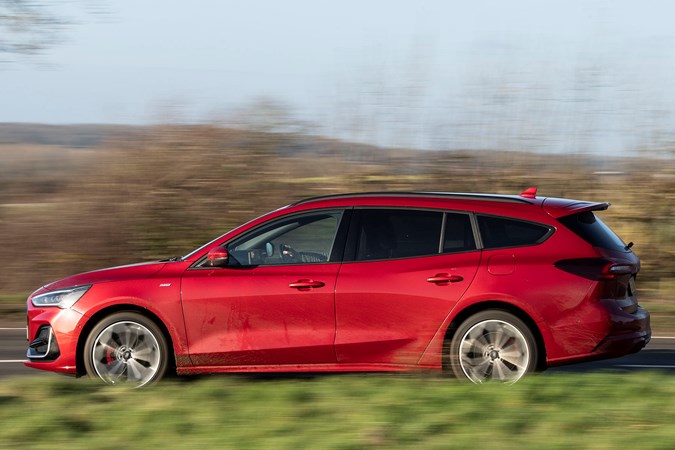
You notice a bit of body roll with the base-model Trend and off-road-inspired Active models, but the sporty ST-Line model corners much flatter thanks to its lower suspension. If you’re a keen driver, you’ll be much happier in the Focus Estate than the Peugeot 308 SW or the Volkswagen Golf Estate.
Ford’s secret to the Focus’ handling ability is its suspension setup. Higher-spec versions of the car feature a multi-link rear suspension setup, which controls the wheels with far more accuracy than the torsion beam system fitted to most Skoda Octavia Estates, for example. As a result, it grips well and doesn’t fidget over rough roads.


